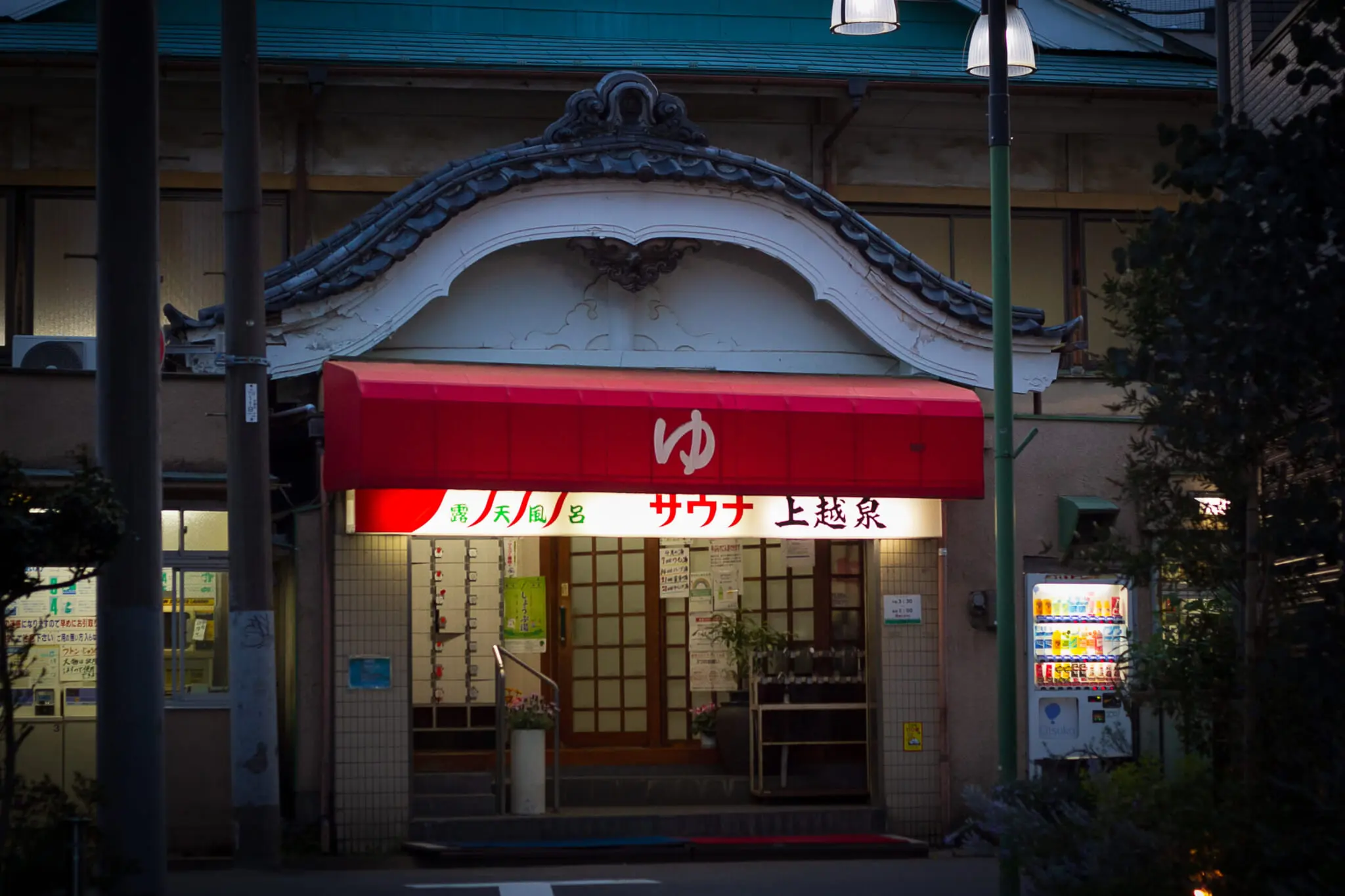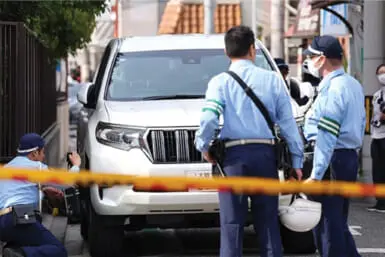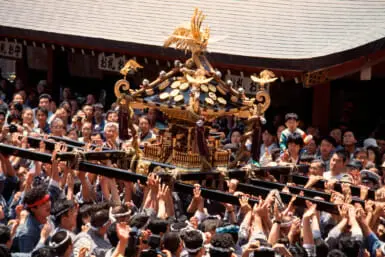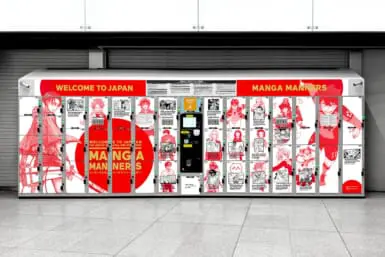Sento (bathhouses) are gorgeous pockets of Japanese life. The equivalent of a British pub or a New York bodega, it’s a place of community. You might hear neighborhood gossip and could even become friends with the locals while you’re at it. Sento are often welcoming to people with tattoos, meaning you can experience Japanese bathing culture without having to worry about covering up. The atmosphere at a sento is also more easygoing than at a traditional onsen. Some of these bathhouses have hot spring water, so technically they are onsen too.
Bathhouses have been a part of Japanese life for hundreds of years, from when people’s homes didn’t come with built-in baths. Often conveniently located, sento can be used by anyone, serving the community one hot bath at a time. Many of them have been renovated over the years, losing some of the original features which made them so distinctive. The sento on this list have all retained some historic features, so we advise you to visit them to get a feel for the old-style Japanese bathhouses. Several of them aren’t very big, so it’s best to visit solo or in small groups.
Here are some of the best retro sento and onsen in Tokyo. Also, make sure you check out our sento etiquette guide before getting naked with the locals.
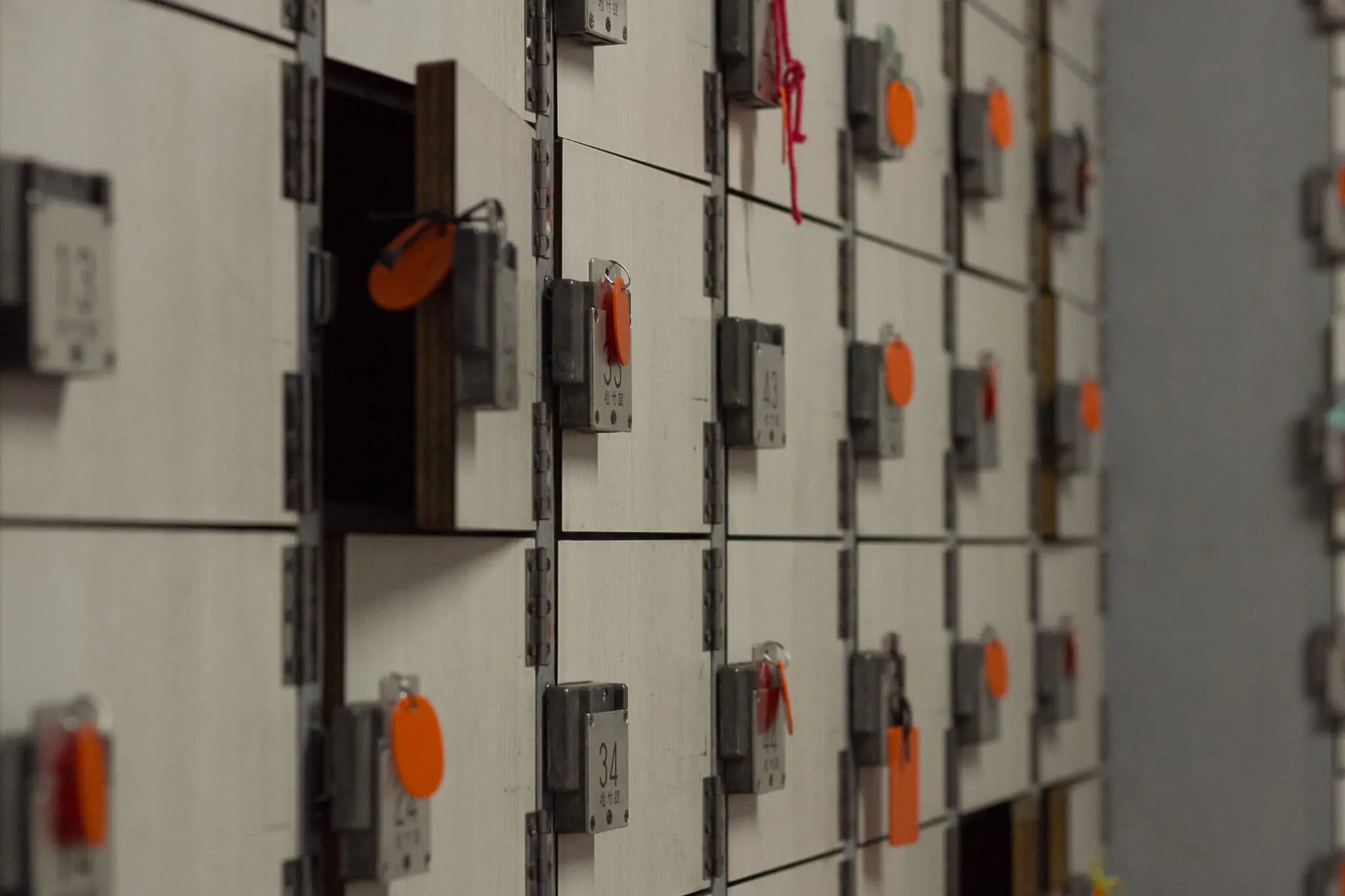
1. Jouestu-sen, Nakano
Run by the most adorable old couple, Jouetsu-sen is located in a residential neighborhood that’s just a 10-minute walk from Koenji Station. Somewhat of a local secret, it is crammed with flowers and greenery, tended to daily by its elderly owners.
The datsuijo changing area contains a number of increasingly rare period items, like the old-style massage chairs which look a little like torture chairs, and an old hair dryer-cum-perm machine. There are a couple of jet baths, a cold water bath and an outside milk bath, tiled in a true Showa style. Jouetsu-sen is rather small, so we advise visiting solo or in pairs.
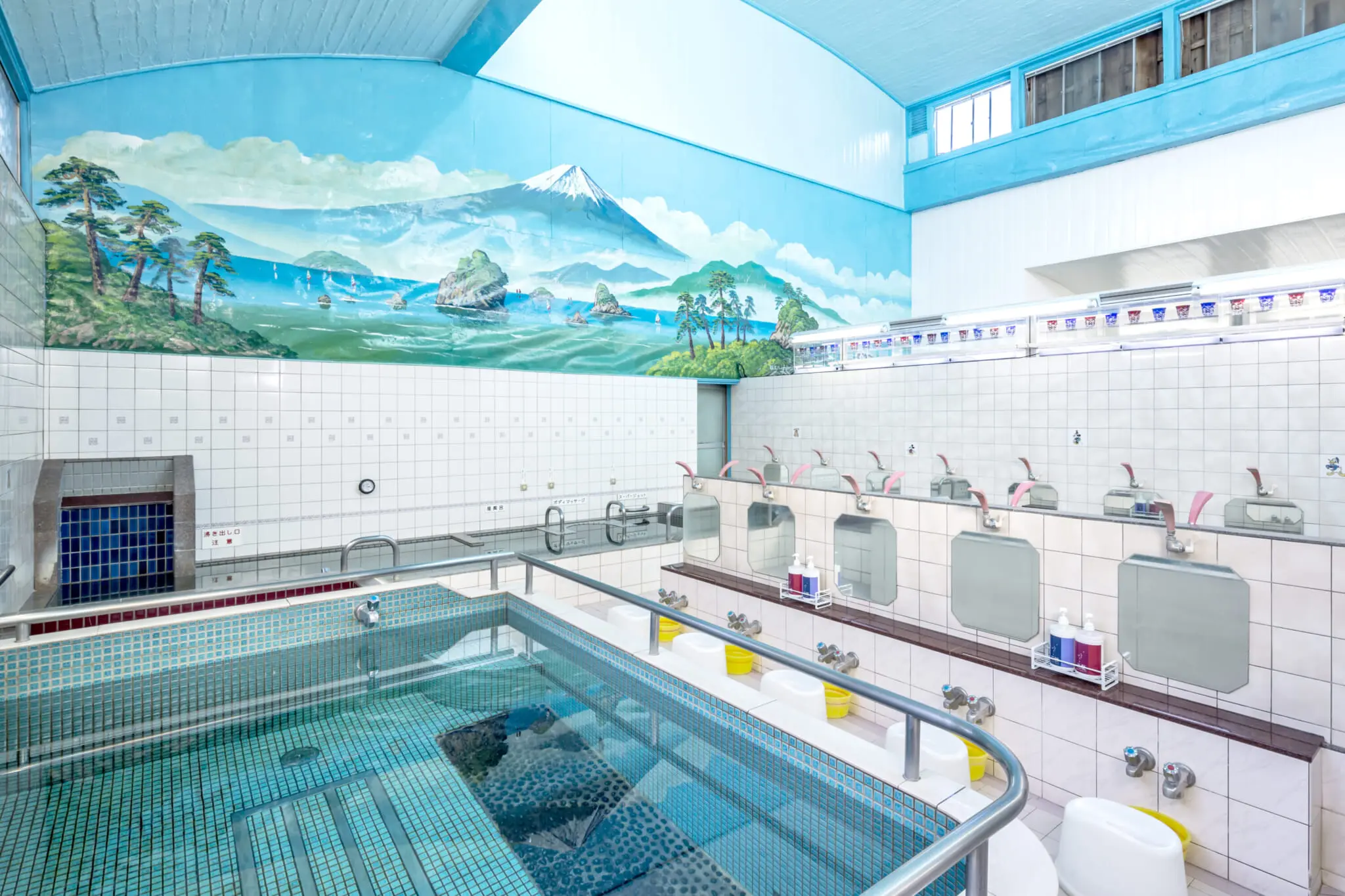
2. Oshiage Onsen, Daikoku-yu, Asakusa
This is the largest sento on the list. Known for its views of Tokyo Skytree from its outdoor bath, Daikoku-yu also boasts some fine retro bathhouse features. There’s also the huge Mount Fuji mural painted by Mizuki Tanaka, one of the few sento mural-painters in the country. The changing area boasts the typical wooden ceiling found in older buildings.
The onsen-sento itself has a wide range of facilities, including a carbonated bath and two different types of sauna. The bathing space changes depending on the day, which means that the facilities available also differ slightly. The mugwort steam sauna, for instance, is available to male patrons on odd numbered days and females on even days. This also applies to the large outdoor bath. Daikoku-yu is open all night, so even if you arrive late you’ll be able to get in.
| Location | Daikoku-yu |
| More Info |
Website →
03-3622-6698 |
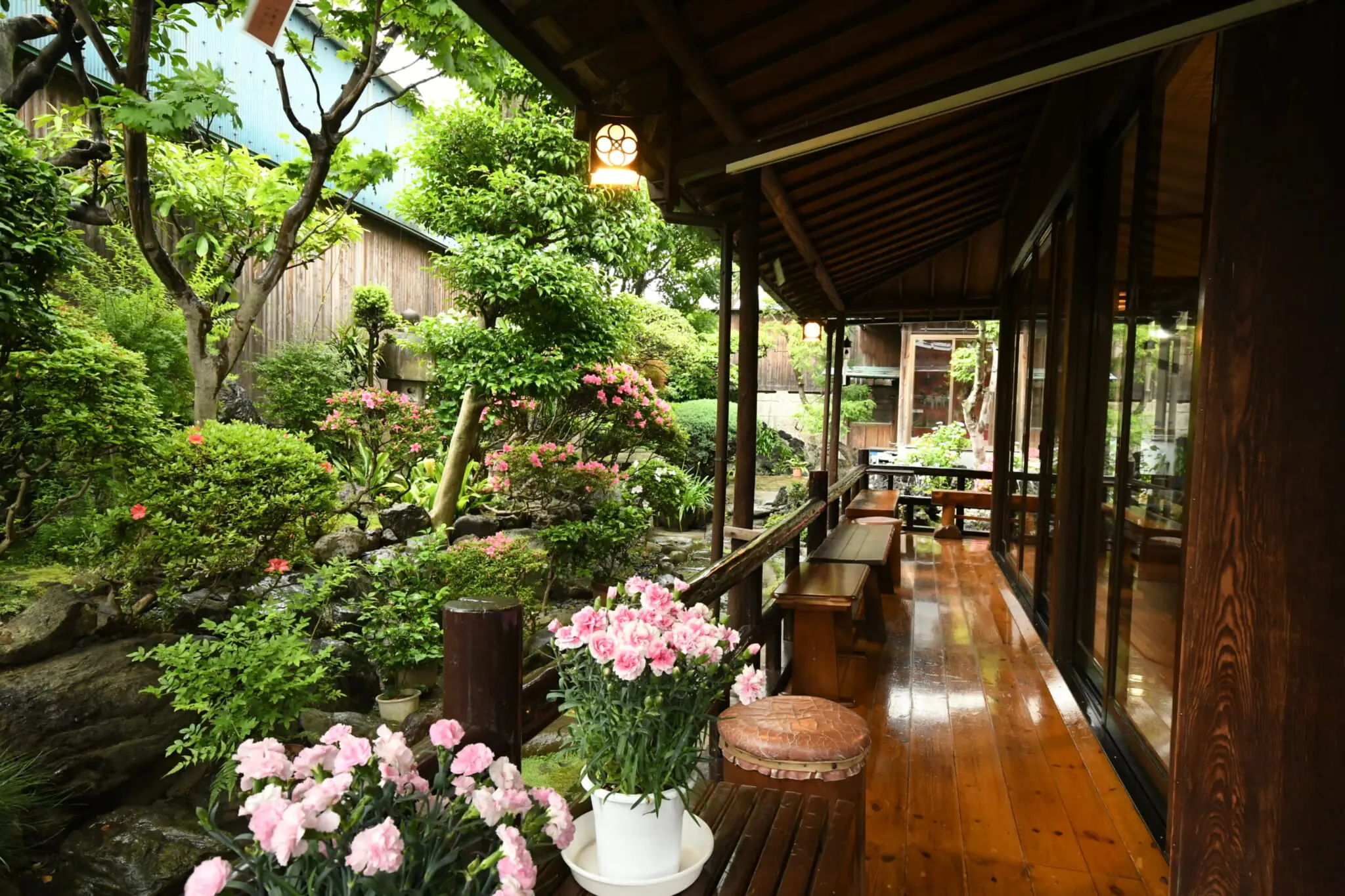
3. Takara-yu, Kita Senju
Takara-yu is a distinguished sento in northern Tokyo, with a garden that looks like it’s taken straight out of a traditional hot spring Japanese inn. Built in 1927, the sento is known among Japanese anime fans as the setting for Kamen Rider, yet it’s the veranda which draws the crowds.
The Japanese garden is accessible from the reception area or from the men’s changing room. On Wednesdays, the areas switch, so anyone on the female side hoping to get some gaikiyoku (outside bathing) should visit mid-week.
| Location | Shows on Location details blocks inserted into post content with short code [location_details] |
| More Info |
Website →
0338812660 |
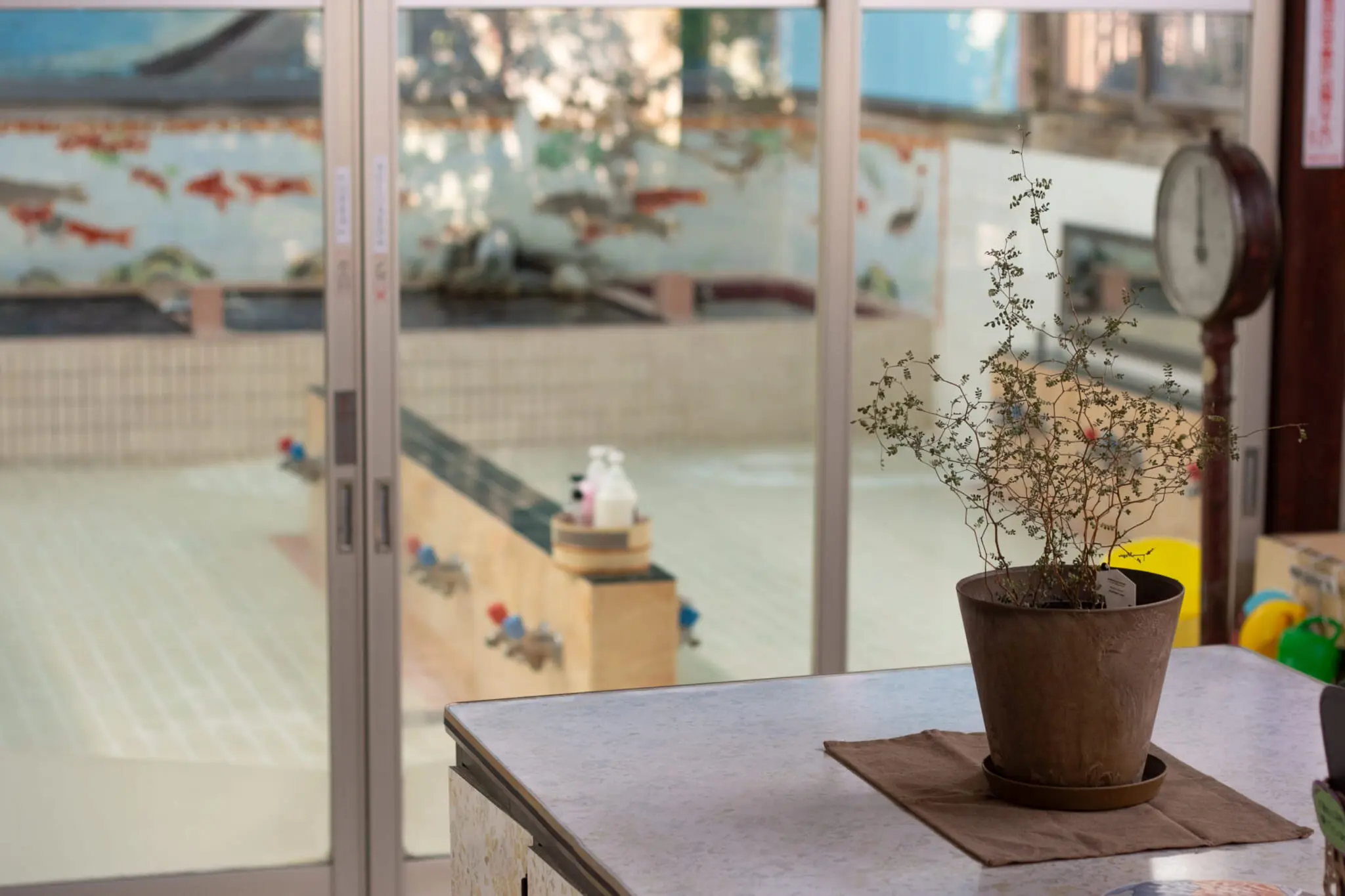
Photo by Kim Kahan
4. Teikoku-yu, Nippori
The tiny Teikoku-yu is a real gem located in downtown Tokyo. With a koi carp theme running throughout its interior, the tiles are painted with fish, and the ponds in both of the changing rooms are home to little fish swimming. The sento, which was built in 1916, was badly damaged in the war, but was then restored to its former glory. It was renovated again in 2023.
Teikoku-yu features wood-fired bathing waters, a cold water bath and a hotter one. The outside resting spaces are open on both sides of the facility, so when you’ve had a bath you can chill out while admiring the shrubbery. The sento reception desk is in the traditional bandai style, with one member overseeing both changing rooms.
| Location | Teikoku-yu |
| More Info |
Website →
03-3891-4637 |
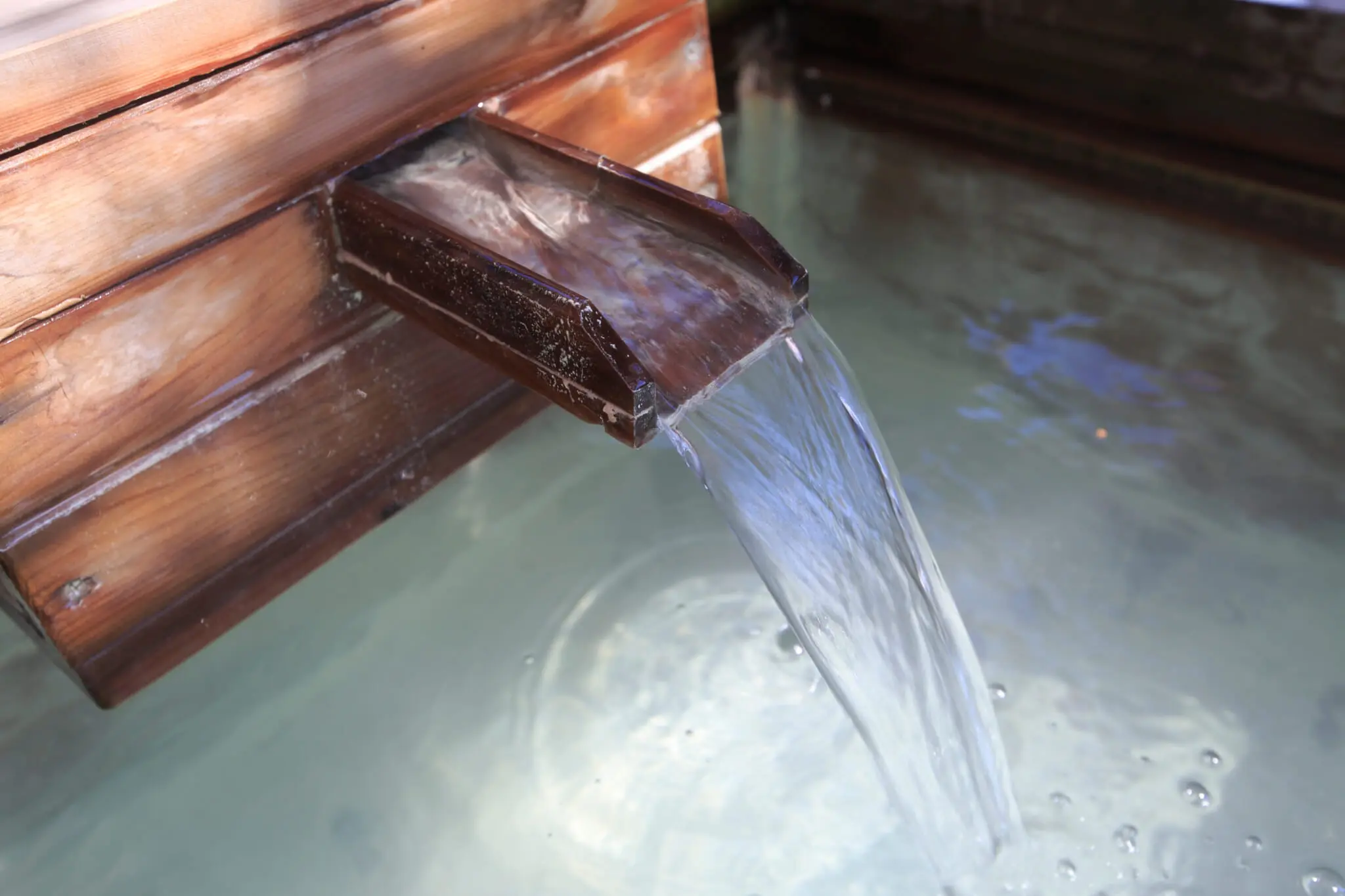
5. Fuji-no-yu, Yoga
Fuji-no-yu screams nostalgia from its traditional irimoya rooftop. As it’s tucked just away from the road, any visitors here must peep around other buildings before catching Fuji-no-yu in all its gabled glory.
This is a small sento with wood at its heart, as many of its furnishings are of the forestry variety, alongside numerous paintings of owls around the venue. Fuji-no-yu also has a wooden hinoki (Japanese cypress) bath, which is often found at a hot spring inn yet rarely at a bathhouse. There is also an azumaya structure above the hinoki bath, which makes you feel like you’re bathing in a shrine.
| Location | Fuji-no-yu |
| More Info | 0337003920 |
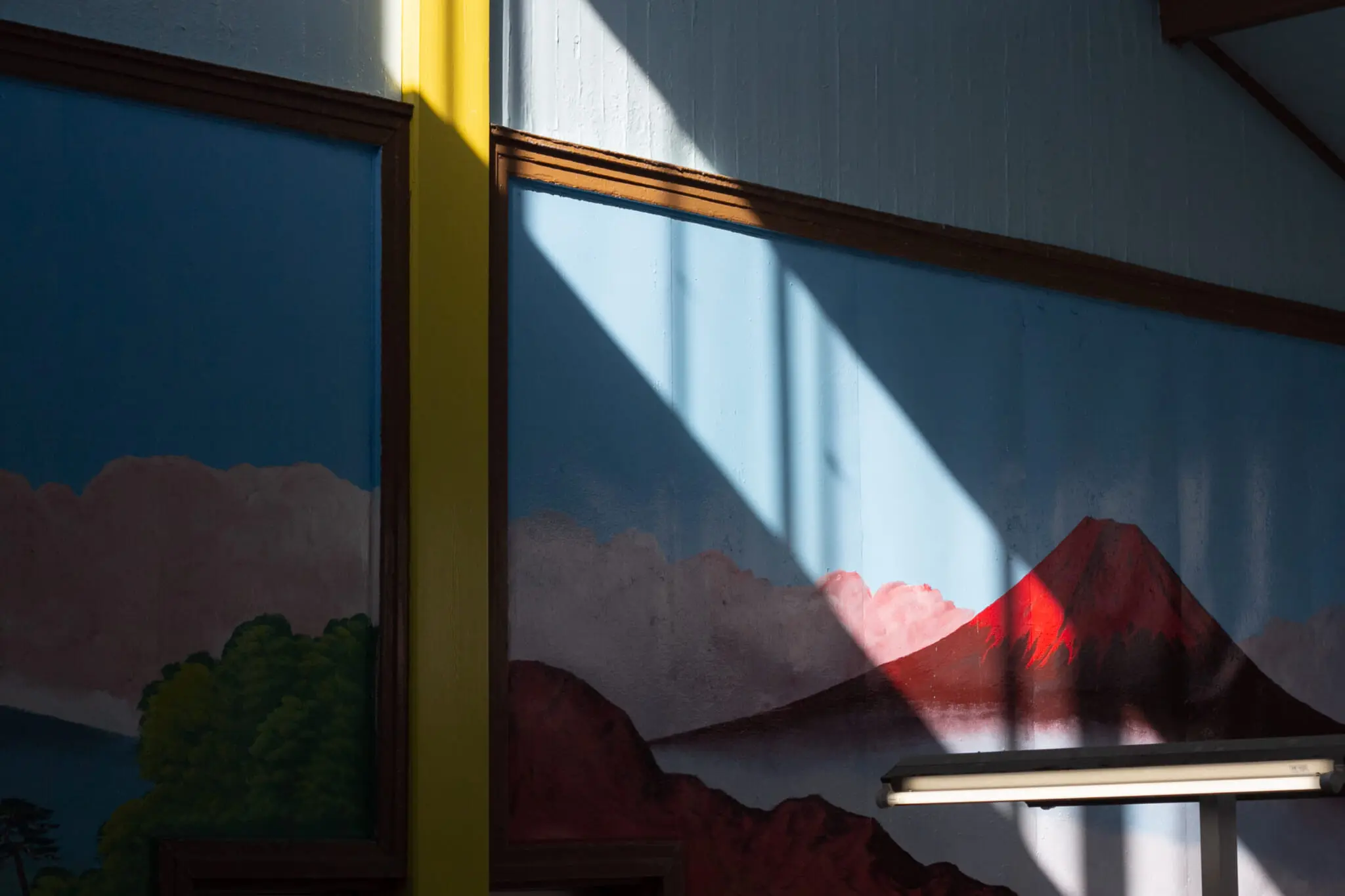
Photo by Kim Kahan
6. Toyokawa Yokusen, Bunkyo City
Painted in circus colors, Toyokawa Yokusen’s cozy interior is warm and inviting, as are the staff. The third-generation owner, Noburo Okajima, burns incense daily to create a peaceful air at his sento, with staff dressed in traditional Japanese uniforms embroidered with the sento name. Toyokawa Yokusen is a small establishment where all the staff take great pride in their work.
The medicinal bath here changes almost daily, with relaxing scents including jasmine and lavender. The sento is loved by locals. Heading inside you’ll hear lots of laughter and chatter. It’s a real community affair.
| Location | Toyokawa Yokusen |
| More Info |
Website →
0339417856 |

